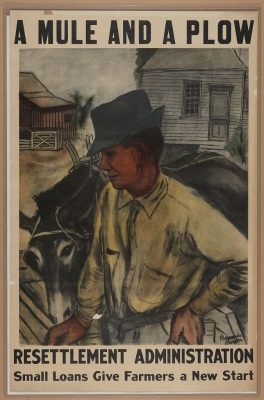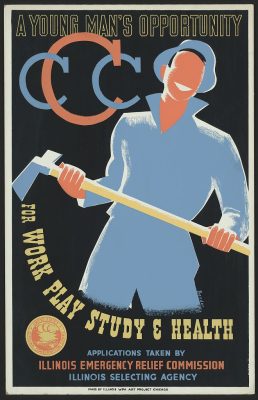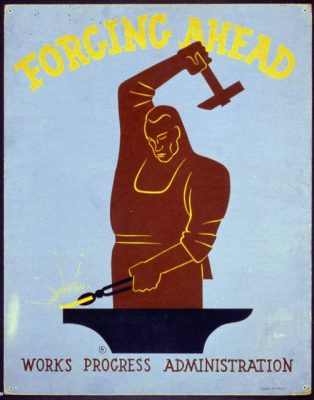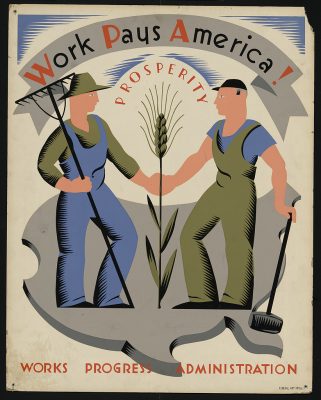In October of 1929, the United States suffered a stock market crash that would alter the course of history. The American economy came to a screeching halt, with economic impacts that came to reverberate around the world. In Wisconsin, particularly in the major economic and industrial center of Milwaukee, businesses and residents alike were hit hard. Between 1929 and 1933, average annual incomes in Wisconsin fell by half, and foreclosure and eviction rates in Milwaukee more than doubled. By 1933, there were over 34,000 Milwaukee families and individuals (approximately 24% of the city’s population) receiving state economic relief. State and local governments increased welfare budgets and implemented work relief programs, but were unable to stave off the impacts of the Great Depression on Wisconsin businesses and families
As the country was in the throes of the Depression, voters elected progressive Democrat Franklin Delano Roosevelt to the presidency in 1932. For the duration of the 1930s, Roosevelt’s policy priorities took the form of the “New Deal” – a series of progressive policies, programs, and regulations meant to stimulate the American economy and get unemployed people back to work in societally beneficial ways. Many of the acts or agencies established during this time came to be known as the “alphabet soup” of the New Deal, known largely by their acronyms; the Works Project Administration (WPA), the Civilian Conservation Corps (CCC), and, most importantly for what would become the village of Greendale, the Federal Housing Administration (FHA) and the Resettlement Administration (RA). These agencies directly employed people who had lost their jobs due to the economic downturn of the Depression and enlisted them for a wide variety of tasks such as maintaining National Forests and National Parks, building roads, building electricity infrastructure, tutoring the illiterate, painting murals, transcribing documents, and much more. The idea was that there were to be a role for everyone in the New Deal agency-powered economy.
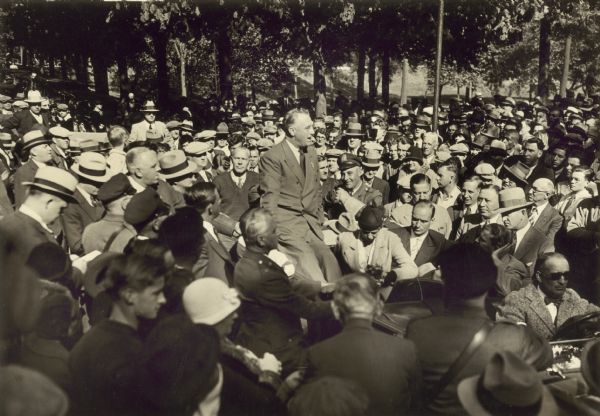
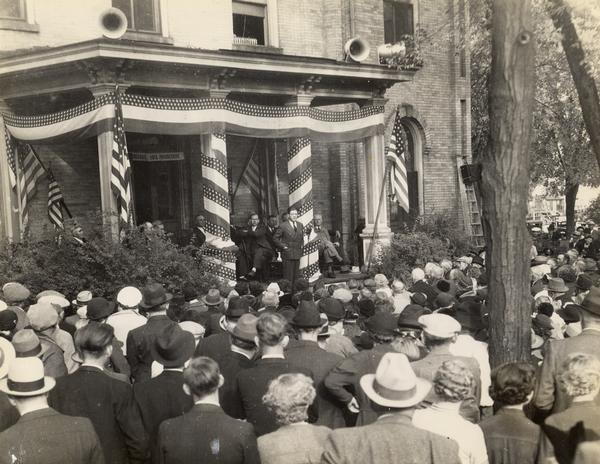
Scroll through a collection of posters made by the Federal Art Project during the 1930s and 40s showcasing various New Deal programs such. From the Library of Congress’ WPA Posters Collection.
State policies in Wisconsin during the 1930s were largely inspired by Roosevelt’s New Deal. Between 1930 and 1938, the state enacted several measures that came to be known as Wisconsin’s “little New Deal”. These included a bill of rights for union members, unemployment compensation, industrial fair practice codes, and rural electrification. Wisconsin officials are also largely to thank for the success of the federal Social Security Act, one of the largest New Deal policies that continues to hold heavy influence in America today. President Roosevelt appointed University of Wisconsin Professor Edwin E. Witte and Arthur Altmeyer, the secretary of the state Industrial Commission, to head the commission that drafted the law. Senator Robert La Follette, Jr., son of famous Wisconsin progressive Robert (or “Fighting Bob”) La Follette, fought for the Social Security Act in Congress. Elizabeth Brandeis of the University of Wisconsin built widespread support for social security throughout the state and the country with the assistance of her father, U.S. Supreme Court Justice Louis Brandeis. Roosevelt’s policies shaped the direction of the entire country, but carried a unique political legacy in Wisconsin. Our public universities, state policymaking, and policy contributions at the federal level have frequently been guided by the unique spirit of Wisconsin Progressivism.
Roosevelt’s New Deal was unlike any policy that had been seen in United States history before. The New Deal emphasized a large expansion of the federal government and direct action to stimulate the economy, provide assistance to workers and families across the country, and do so through the provision of federal projects focused on improving the state of the country through the arts, industry, conservation, housing, and more. FDR’s New Deal was a one-of-a-kind federal policy package that, like the Greenbelt towns it created, was a unique product of the political and economic landscape of the 1930s. A product of its time yet one with incredible contemporary impacts, the New Deal is perhaps one of the most significant federal policy initiatives in United States history, and the contributions of Wisconsin progressives have shaped our state and country immeasurably. These initatives have a legacy that persists in our universities, governmental institutions, and policy debates today.
Written by Evie Sellers, August 2024.
Sources:
Frank Freidel, “Franklin D. Roosevelt | Accomplishments, New Deal, Great Depression, World War II, & Death.” Britannica. https://www.britannica.com/biography/Franklin-D-Roosevelt.
Independence Hall Association. “Putting People Back to Work.” USHistory.org. Accessed December 3, 2023. https://www.ushistory.org/us/49b.asp.
Alice Honeywell, “La Follette and His Legacy,” Robert M. La Follette School of Public Affairs, University of Wisconsin-Madison. 1995. https://minds.wisconsin.edu/bitstream/handle/1793/37598/LaFLegacy.html
Michael Parrish, “New Deal Critics.” Bill of Rights Institute. Accessed December 3, 2023. https://billofrightsinstitute.org/essays/new-deal-critics/.
“President Franklin Delano Roosevelt and the New Deal,” Library of Congress. Accessed December 3, 2023. https://www.loc.gov/classroom-materials/united-states-history-primary-source-timeline/great-depression-and-world-war-ii-1929-1945/franklin-delano-roosevelt-and-the-new-deal/.
Joseph A. Ranney, “Beating the Great Depression: Wisconsin’s “little New Deal.”” Wisconsin Court System – Articles on Wisconsin legal history. Accessed December 2023. https://www.wicourts.gov/courts/history/article43.htm.
“U.S. History, Franklin Roosevelt and the New Deal, 1932-1941, The Second New Deal.” OpenEd CUNY. Accessed December 3, 2023. https://opened.cuny.edu/courseware/lesson/444/student/.
Daryl Webb, “Great Depression.” Encyclopedia of Milwaukee. Accessed December 2023. https://emke.uwm.edu/entry/great-depression/.
“WISCONSIN.” 1940. United States Census Bureau. https://www2.census.gov/library/publications/decennial/1940/population-volume-1/33973538v1ch10.pdf.
